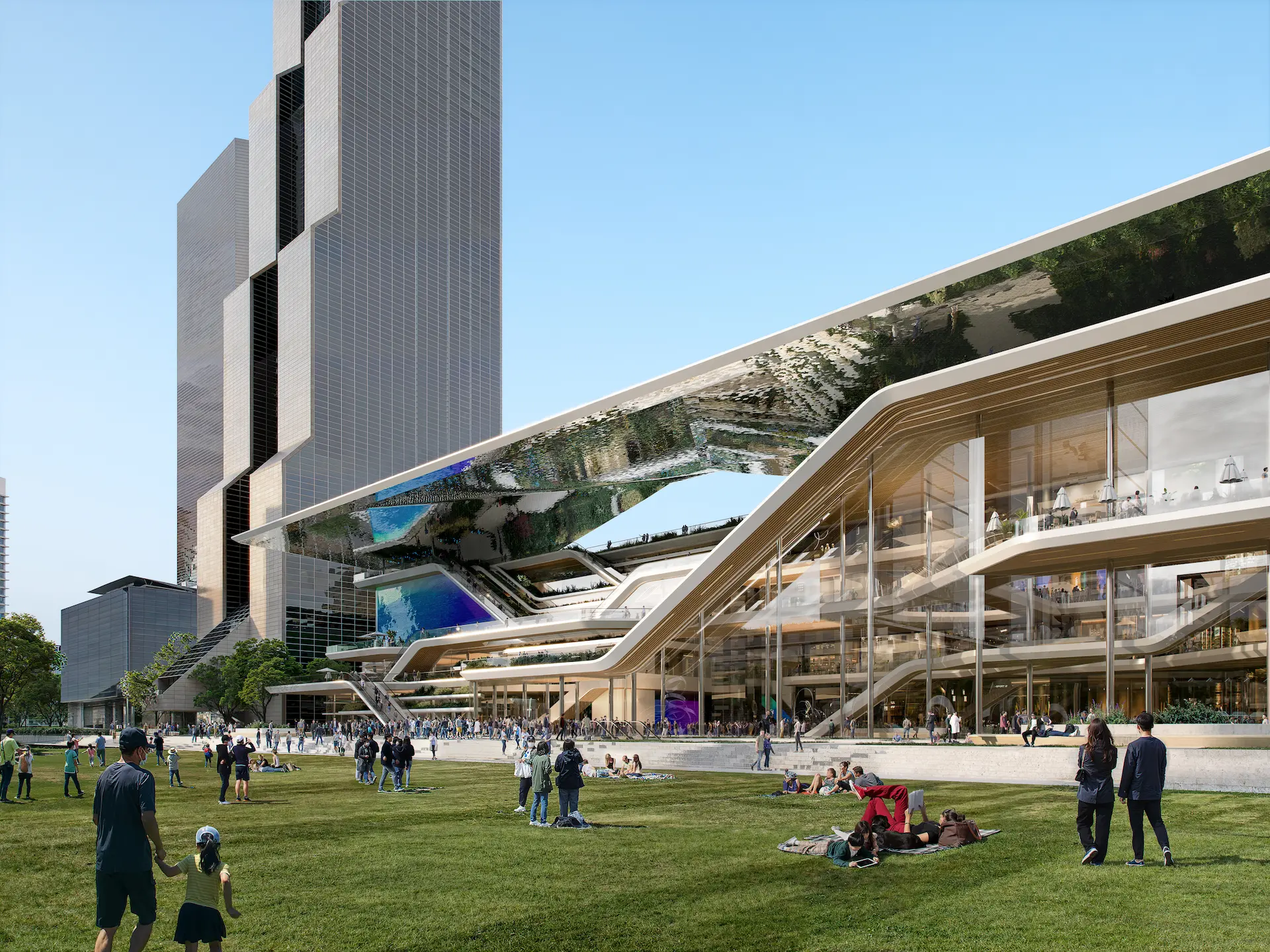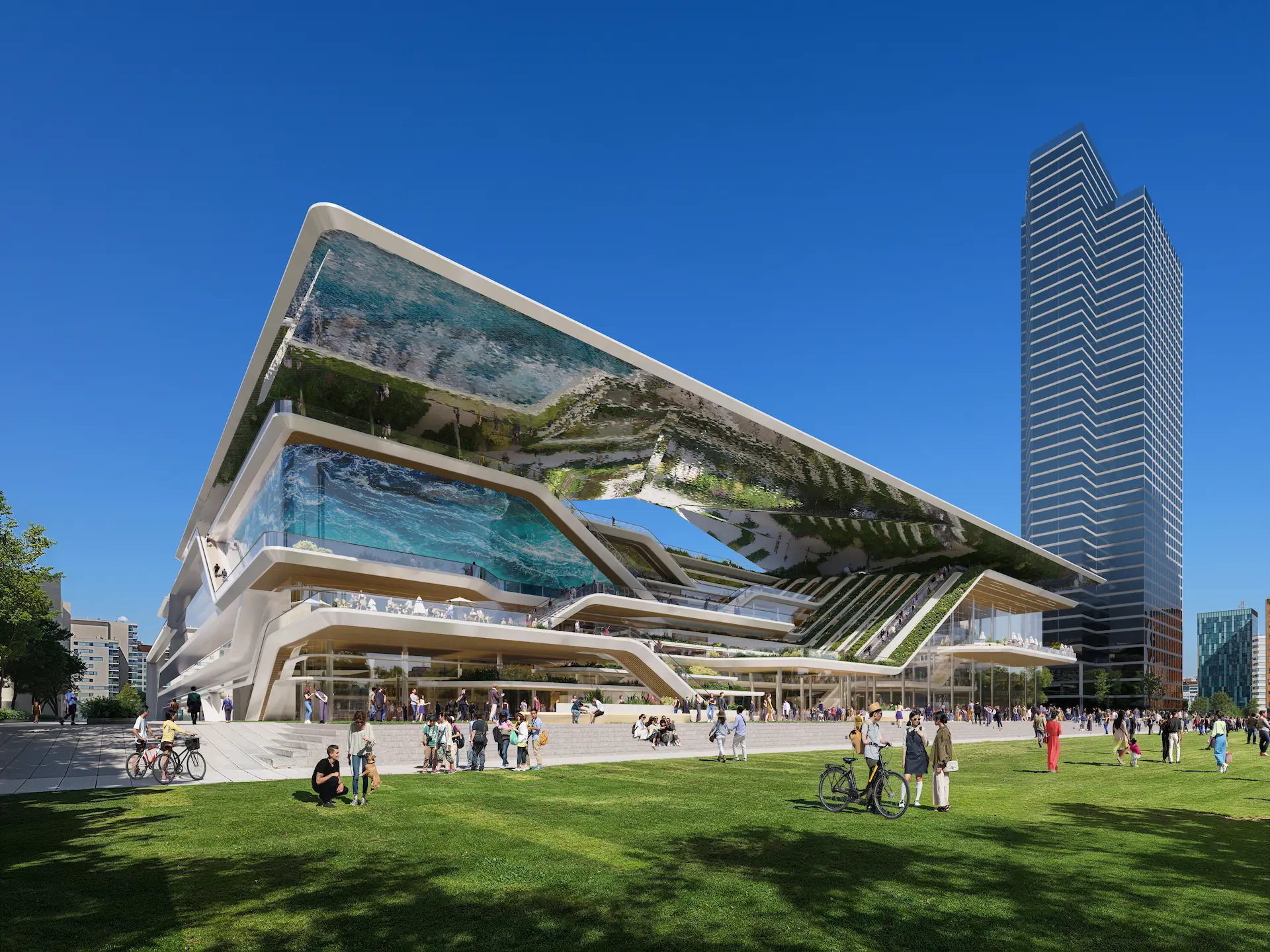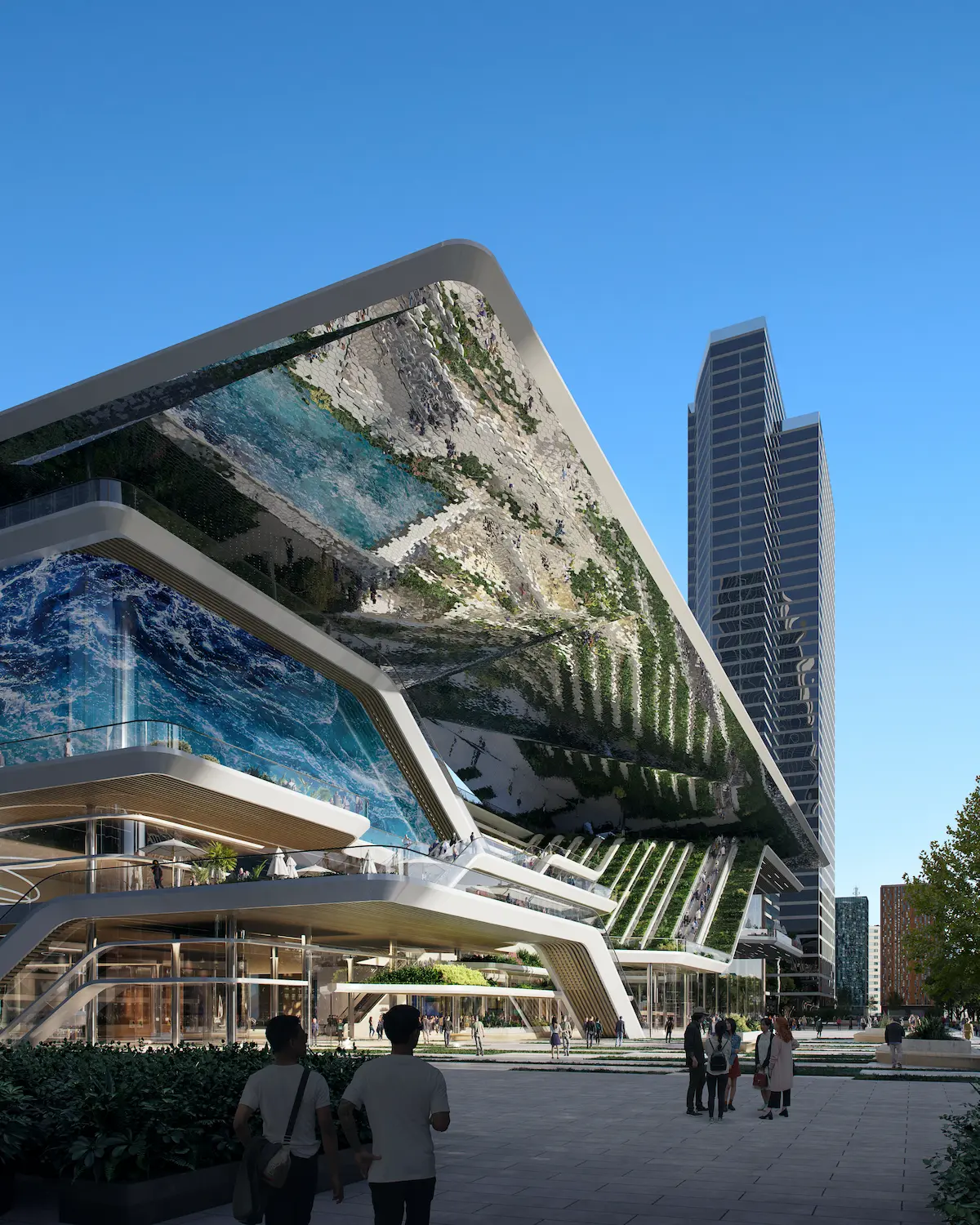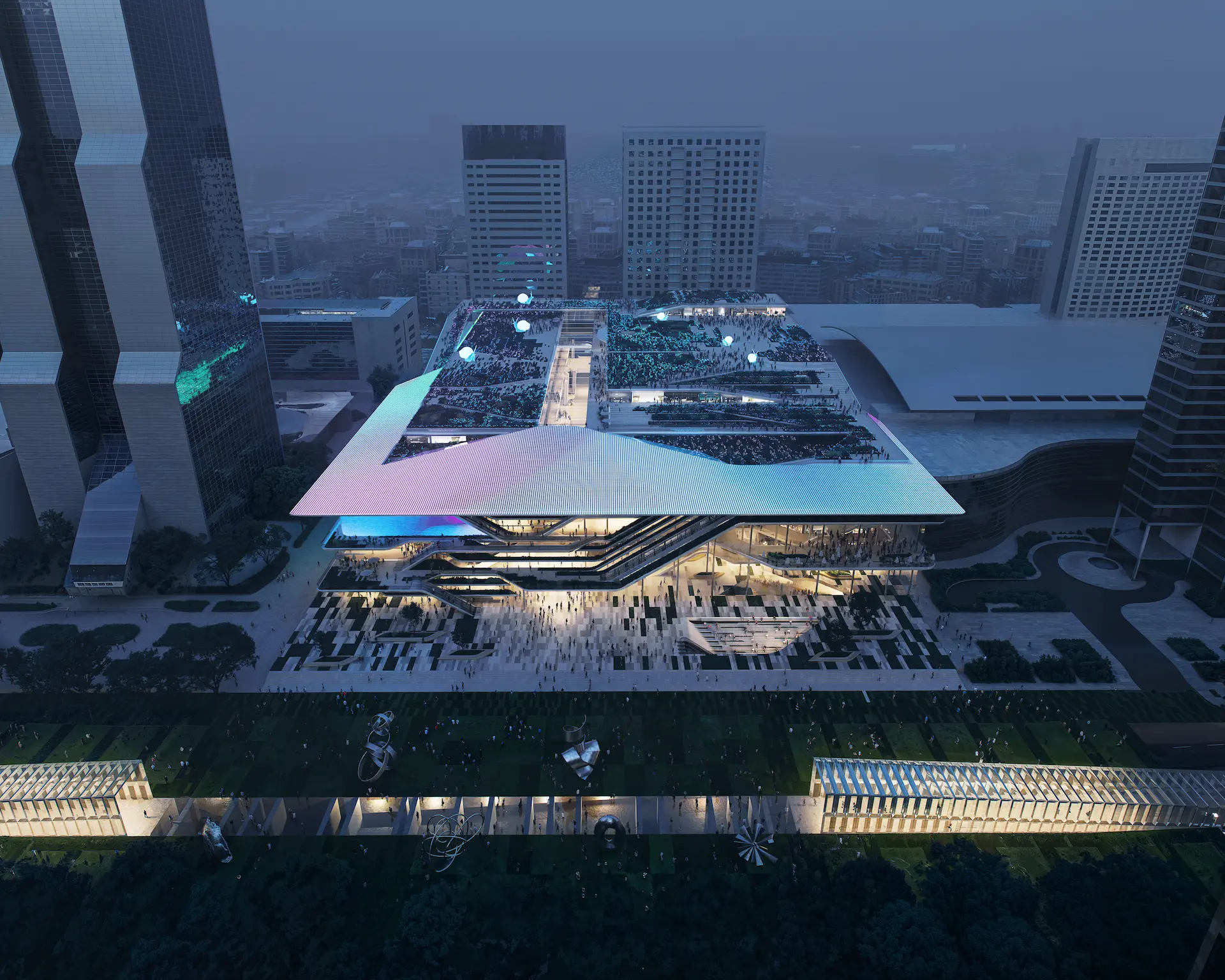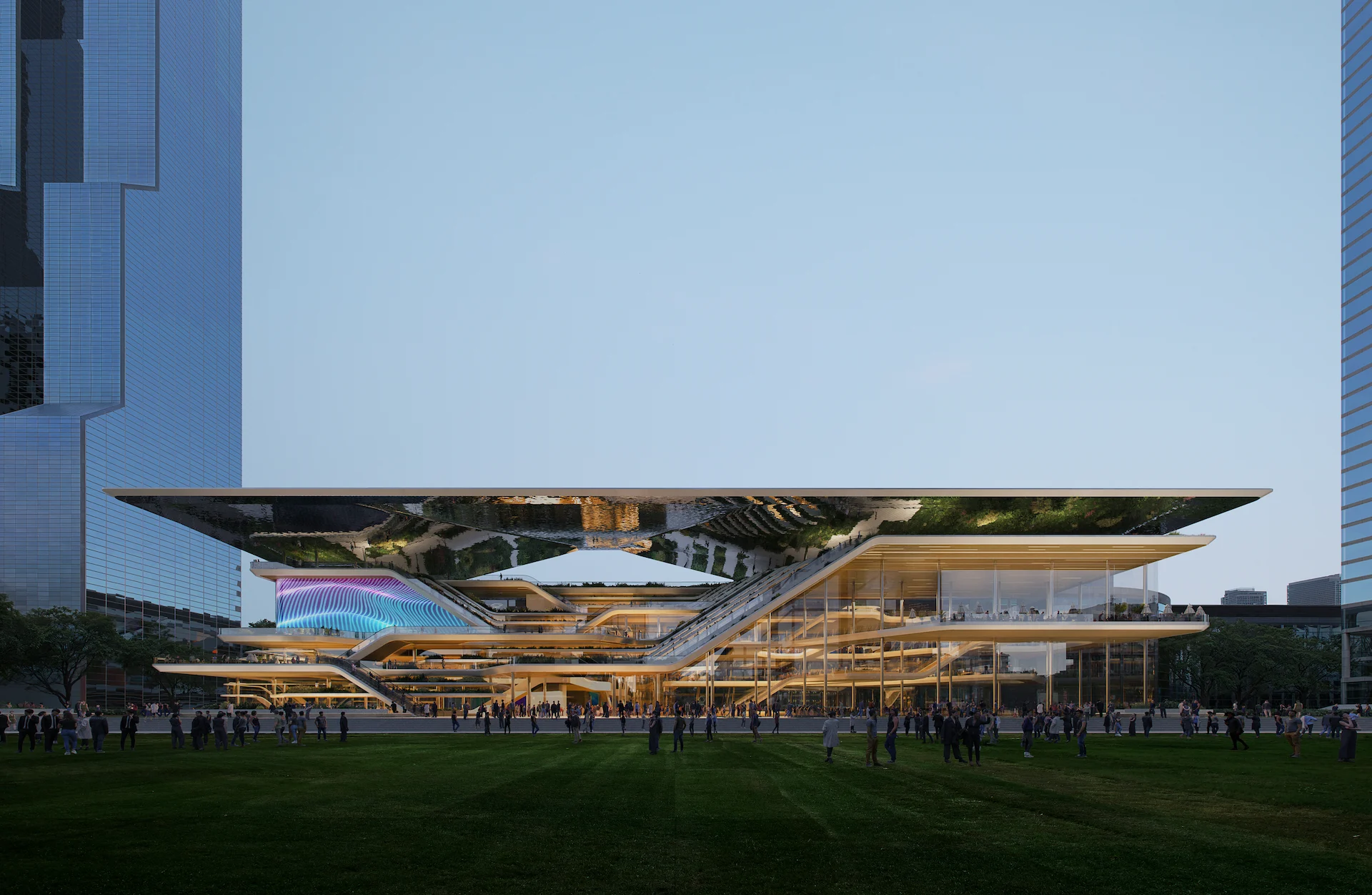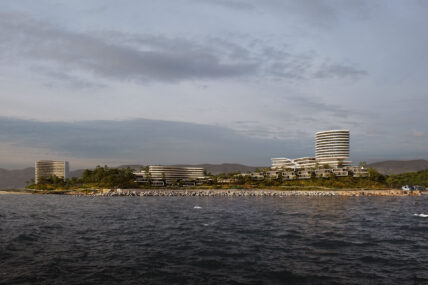COEX-Venue
Competition Renderings for UNS Amsterdam Capture Seoul’s Mirrored Canopy
One bold gesture
At COEX-Venue in Seoul, a former convention centre has been given a strikingly calm new face and a razor-thin mirrored canopy. Stand on the plaza and you see not only the stepped geometry and diagonal escalators but the rooftop life above—cafés, restaurants, people—reflected back at you. The roof sees the street, and the street sees the roof. One bold gesture becomes a two-way conversation.
The canopy does more than keep off the rain and provide shade. Each mirror tile is manually tilted so that reflections break into a lively shimmer rather than a single glare. It’s a theatre with purpose, doubling the façade and broadcasting rooftop life to passers-by.
Defined by three surfaces
UNS’s Amsterdam team asked us to communicate their remarkable design — defined by three surfaces: the street façade, a side elevation, and the roof — in six final images, most of them centred on a single side. That constraint was both a gift and a test. A gift, because the story could be extremely clear. A test, because variation had to come from nuance—angle, rhythm, and atmosphere—rather than from a tour of different corners. The project was part of an invitation-only competition with major players in the room, so the images had to carry focus and confidence.
Anchored in climate realism
COEX sits beside a new park deck. Beneath it runs a sunken retail street, like a familiar high street folded under a green lid. Above is public space, while below lies a cooled commercial spine. The proposal keeps the energy of a mall but works as an open urban plaza, with cultural and retail uses stitched through. A corner LED screen nods to Seoul’s kinetic street life without overwhelming the architecture.
With no drone photography or Google 3D coverage, every frame was built in CGI. The surrounding towers arrived as white-box models; everything else—materials, glazing logic, and skyline—was built and shaded by our visualisation team. Lighting decisions were anchored in climate realism. Seoul, they were told, behaves like Central Europe: four seasons, bright air, and less of the brooding Amsterdam rain that can look romantic on screen but misrepresents the place.
Stronger images emerged
There was a human rhythm to the collaboration worth noting, with a clear initial brief, including camera positions and narrative beats set out early, but also a willingness to shift when stronger images emerged. Our work was split by zone—core building, immediate public realm, and surrounding building—allowing speed without losing coherence. We even delivered an extra high-resolution hero image—because there was still fuel in the tank and the sequence deserved a final, generous view.
Seoul watches itself
Two lessons stand out. First, constraints can sharpen our creativity. Showing one façade six ways forced a cinematic approach instead of postcard shots. Second, realism counts. With invited heavyweights in the field such as Zaha Hadid Architects and OMA, the temptation in a competition is to dial everything to the extreme. Instead, our team kept most frames credibly lit, reserving the gloss for where it served the narrative: the reflective soffit and the retail glow.
Will a mirror change a city? Perhaps not alone. But in a district built on spectacle and flow, a canopy that lets Seoul watch itself—and links a sunken street to a raised park—feels more like intention than gimmick. It reads as purposeful infrastructure—an active interface between city layers, clearly expressed and confident enough to perform as civic theatre.
Project details

